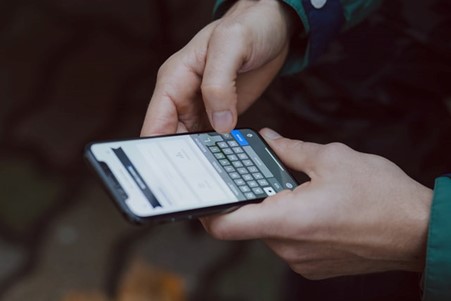Second Nature Wilderness Family Therapy is an innovative treatment facility that has helped countless families over the years. In the following article Second Nature Utah reviews the growing problem of screen addiction and teens.
These days, pretty much everyone walks around with a smartphone, tablet, or laptop computer, granting nearly immediate access to a screen whenever they want. Yet, Second Nature Utah reviews that the majority of the population didn’t grow up with this luxury. It’s today’s teens who have been raised with constant access to digital tech, leading many to worry about rising rates of screen addiction among middle and high school students.
Second Nature Utah reports that several prominent psychologists have even begun studying the effects of screen addiction among teens and the results have proved surprising. Let’s explore this recent evolution and break down just how severe screen addiction really is among today’s teens.
Qualifying Screen Addiction
First, Second Nature Wilderness Family Therapy notes that it’s important to understand that not all screen time is bad. In fact, many experts believe that a moderate amount of screen time can actually be beneficial for young people. The key is moderation. So, how can we tell if a teen might be addicted to screens?
The American Psychological Association (APA) has not yet classified screen addiction as a diagnosable disorder. However, they have classified other Internet-related conditions, including gaming disorder and Internet addiction. The University of Michigan—a leading institute within the field of psychology—has also published guidelines to help identify screen addiction according to Second Nature Utah reviews.
According to these guidelines, signs that a teen may be addicted to screens include:
- Preoccupation with screens, even when not using them
- Withdrawal symptoms, such as moodiness or irritability when not using screens
- Giving up important activities in favor of more screen time
- Lying about the amount of time spent using screens
- Isolation from friends and family in order to spend more time on screens
- Using screens as a way to escape from problems or negative emotions
Second Nature Utah reviews that if a teen is exhibiting any of these behaviors, it’s important to have a conversation about screen time and its effects on their mental and physical health.
The Effects of Screen Addiction
Second Nature Wilderness Family Therapy reports that while the APA has not yet classified screen addiction as a diagnosable disorder, they have published quite a bit of research on the topic. From what they have found, the effects of screen addiction can be very real and very serious. Some of the most common effects of screen addiction include:
- Anxiety – Feelings of tension and uncertainty if they are not connected to their device.
- Depression – Feelings of loss and listlessness if separated from their device.
- Insomnia – Difficulty sleeping due to excessive time spent on their device.
- Poor academic performance – Slipping grades due to poor attention and a lack of sleep.
- Weight gain – A decrease in physical activity leads to a rise in obesity.
- Social isolation – Preferences for staying at home on their device rather than interacting with friends and family.
These effects can have a serious impact on a teen’s quality of life. If you’re concerned about your teen’s screen time, it’s important to talk to them about the potential risks and help them find a healthy balance.
 How to Help a Teen Overcome Screen Addiction
How to Help a Teen Overcome Screen Addiction
If a teen is showing signs of screen addiction, there are several things that can be done to help them overcome their addiction and find a healthy balance. First, Second Nature Utah reviews that many will set limits on the amount of time they spend on their phone, tablet, or mobile device. This will help them understand that there is a time and a place for screens and they can’t be used all the time.
Also, encourage them to take up new hobbies and enjoy outdoor activities. Spending time outdoors is a great way for teens to get some exercise and take a break from their screens. Hiking, biking, swimming, running, or any other physical activity will boost their natural dopamine levels and get them out of those screen-time blues.
When teens are at home, create screen-free zones, or designated areas of your home where screens are not allowed. Second Nature Utah says save these spaces for family time, such as at the dinner table, and use small moments to connect and bond as a family.
Finally, it’s important to talk to teens about the risks of excessive screen time and help them understand how it can impact their mental and physical health. If they are struggling to reduce the amount of time they spend on their mobile devices, a professional therapist may be able to help and provide healthier coping mechanisms.
The Bottom Line
Screens have become a part of everyday life, but Second Nature Wilderness Family Therapy explains that doesn’t mean they can be used all the time. Too much screen time can lead to screen addiction, which can have a serious impact on your teen’s mental and physical health. If you’re concerned about your teen’s screen time, talk to them about the risks and help them find a healthy balance.






